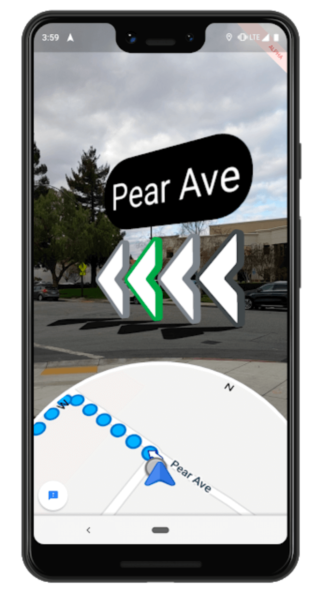Augmented and virtual reality (VR) are entering the trough of disillusionment. Both technologies have been massively hyped but so far, with a couple of exceptions, have largely failed to achieve mainstream adoption.
Some analysts argue that VR has performed in accordance with market expectations. But some see a market that may never be mainstream. Augmented reality (AR) is a potentially different story, although I wrote about AR as a form of visual search a decade ago.
Snapchat filters and Pokémon Go are the most mainstream examples of AR success to date. But they’re still not fully mainstream applications.
Beta testing AR walking directions with Local Guides. Now, with the impending introduction of AR into Google Maps, we may see a product that could have a massive impact. At Google’s 2018 developer conference, the company previewed Google Lens-like AR features offering improved walking directions and place information through the smartphone camera.
Google is now actively testing augmented walking directions. The company said today in a blog post, “We’re starting to test this feature with select Local Guides, a small group of Google Maps enthusiasts around the world who we know will offer us the feedback about how this approach can be most helpful. Like other AI-driven camera experiences such as Google Lens (which uses the camera to let you search what you see), we believe the ability to overlay directions over the real world environment offers an exciting and useful way to use the technology that already exists in your pocket.”

Pokémon Go was a breakthrough. Pokémon Go was also largely map-based. It was the second major location-based game launch from Niantic Labs, run by former Google Local chief John Hanke. The first was Ingress. The company, spun out of Google in 2015, also produced Field Trip, another AR-influenced local app.
In the past, there were other local search apps with AR, though they were more crude (e.g., Yelp Monocle, Zagat). Layar offered an AR browser that revealed business identities and data as users panned the immediate with their mobile phones, one of the promised future benefits of Google Lens (and the now abandoned Google Goggles).
There are a number of retailers that have incorporated AR into their apps or in-store experiences. But so far nothing has really caught fire or driven significant consumer behavior change.
Why should you care. Google Maps is one of seven Google products that claims more than a billion users globally. Google is one of only a very small number of companies — the others being Amazon, Apple, Facebook and Microsoft — that can roll out practical AR applications to hundreds of millions of people simultaneously.
Most previous AR applications were about novelty or offered poor user experiences. Mapping and visual local search have obvious utility and should be widely adopted, if or when they are generally released. And if we assume that AR walking directions and other features make into Maps, it’s a safe bet that some form of AR monetization — aka paid marketing opportunities — will follow in time.
